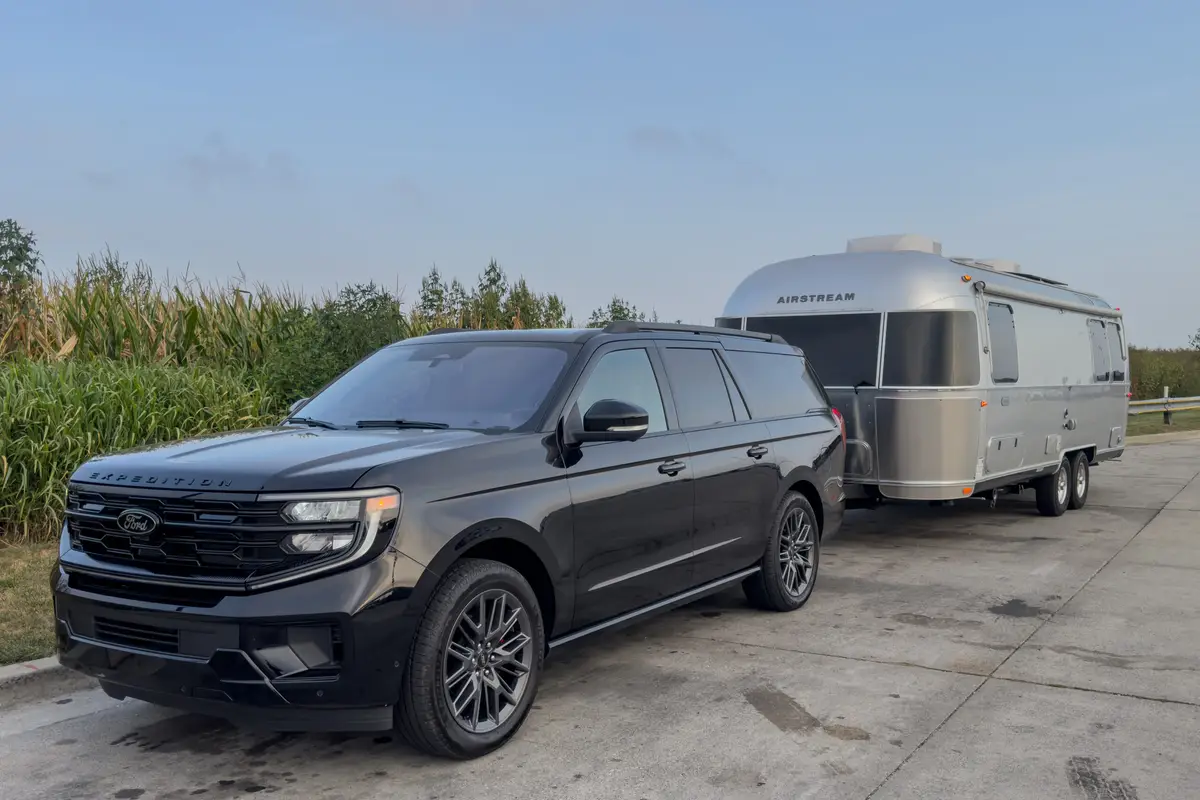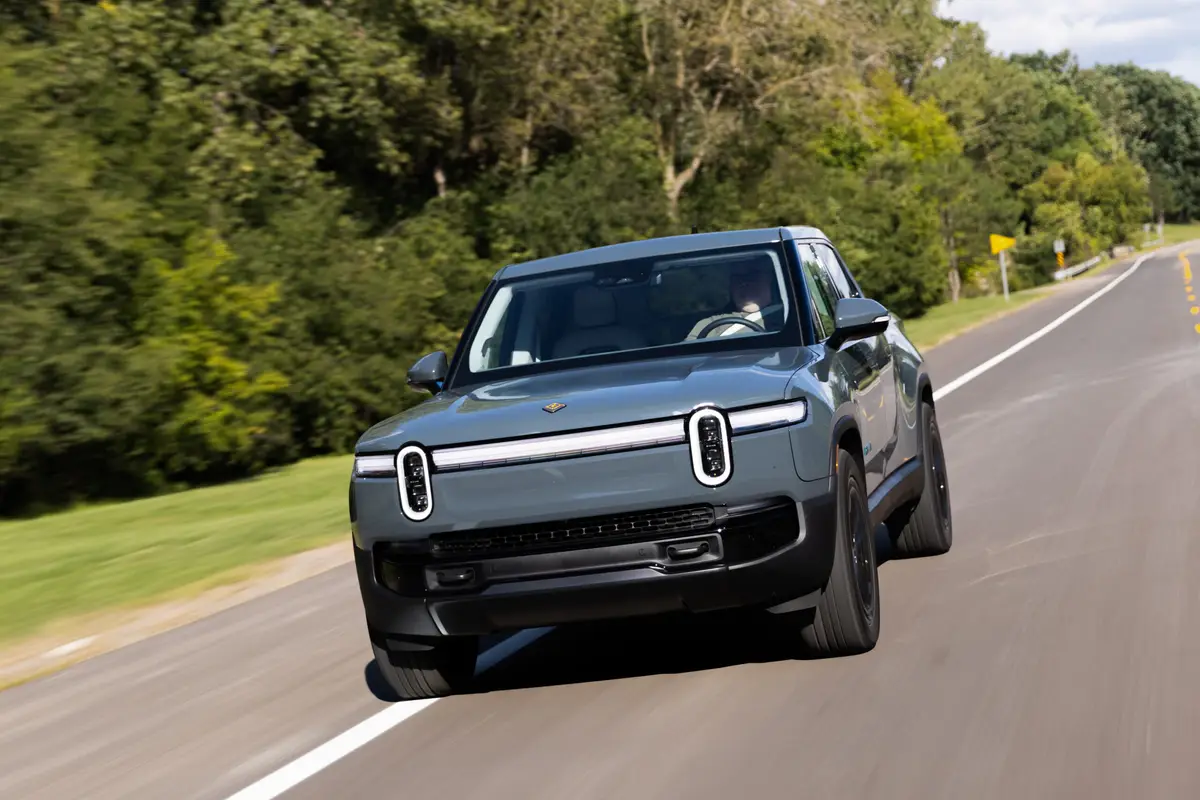Cincinnati.com's view
ANOTHER sport-utility vehicle? Well, no, not exactly. BMW calls its new concoction a Sports Activity Vehicle. The company notes that in the luxury class, fewer than 4 percent of owners EVER get off-road, so it has designed its new X5 for the other 96 percent who are more interested in the traditional BMW core value of Freude am Fahren, the sheer joy of driving.
There are machines that feel more posh – the Lincoln Navigator and Lexus LX 470 trundle to mind – and there are machines that would do better where the earth has never felt the road builder’s touch, the Jeep Grand Cherokee perhaps the pick of the litter in this size class, but the X5 truly stands alone as a vehicle you will want to get into and flog over paved roads. Think of it as a tall sports sedan. I’m serious. Very serious.
At 67.2 inches, the X5 is nearly a foot taller than your average sedan, although the climb up into the driver’s seat is less daunting than in many SUVs. Once ensconced behind the wheel, you have that “command of the road” feeling that SUV buyers tell market researchers they see as one of the most desirable attributes of the breed.
Accordingly, one at first approaches curves with the discretion that many SUV experiences – some of them quite unpleasant – have engendered. Confidence builds quickly, however, and so does speed. True to its pedigree, the X5 feasts on curvilinear surfaces. Once you get past the sense of tippiness, which is more a function of height than any serious amount of roll, thanks to the hefty sway bars, you can pour on the power in curves just as you would with a far smaller mount, with near impunity.
Part of the reason for this is that the X5 is all-wheel drive. A transfer case with planetary differential sends a constant 38 percent of the available torque forward, the rest aft. Given the X5’s extraordinary 50-50 weight distribution (rare enough in cars), the effect is rather like driving a rear-drive sports car. Both front and rear axles have open (i.e., non-limited-slip) differentials, so this machine would not show the same facility at moving out when only one wheel has traction that the Mercedes sport-ute and Grand Cherokee with QuadraTrac II do. The offset is that it’s more fun for an involved driver to toss around.
BMW uses a more passive approach to traction, in keeping with the vehicle’s paved-surface biases. Its patented All-Season Traction system, which works astonishingly well on its rear-drive cars, here is applied to all four wheels at all speeds. It employs both power-reduction and individual-wheel braking to take power from the wheel or wheels that can’t use it, thereby allocating to those with grip. I didn’t have any snowy roads to test it on in the X5, but when I checked it out on a 5-Series car, I found it amazingly efficient, swift and unobtrusive.
In addition, the world’s first SAV has an advanced Dynamic Stability Control system, too, which allows a driver to push the limi ts with great assurance. Here, a gaggle of sensors monitors the speed of each wheel, the steering angle, lateral acceleration, yaw (rotation about the vertical axis) and longitudinal acceleration. They send their findings to a microprocessor which has been programmed to gently apply braking force to one or more wheels when it determines that a trip into the weeds is imminent. All this happens in milliseconds. A dash-mounted switch does not disable the system, but rather raises its tolerance of wheel slip a tad for hot-and-heavy work or for driving in snow or sand.
I tried it out solo, knowing that the perennial passenger would be “coaching” at the threshold of pain long before I reached the limit of the X5’s ability. Darn near scared myself with the switch in wild man position, but the X5 maintained its insouciant demeanor.
All this trickery would be wasted if the platform weren’t exceptionally rigid. The X5 has unibody construction instead of the far more typical body- me design used with most SUVs (the Grand Cherokee and Lexus RX300 conspicuous exceptions). It felt all of a piece in the most energetic highway maneuvers, and over rough terrain neither squeaked nor groaned nor rattled.
With a trim 183-inch overall length and a compact-car-like 97-cubic-foot interior volume, the X5 weighs a surprising 4,828 pounds. Heavy-duty construction and lavish optioning take their toll. This is still one of the fleetest machines in its extended category, thanks to a no-holds-barred powerplant, a splendid 4.4-liter, 32-valve, double-overhead-cam, all-aluminum V-8 with variable valve timing. It produces 282 hp (@5,400 rpm) and a bountiful 324 foot-pounds of torque (@3,600). That was sufficient to propel the hefty beast from a standing stop to 60 mph in well under 8 seconds with hardly any fuss at all. This thoroughbred wants premium fuel, and no stinting. EPA estimates are 13 mpg city, 17 highway. I recorded 13.8 in somewhat demanding service.
Most importantly, because of the valve trickery, an abundance of power is available across a wide range. It is utilized effectively by a smart five-speed automatic transmission of the “adaptive” sort that reads both driver inputs and ambient conditions to suit its shift patterns to the needs of the moment. It was extraordinarily apt, and in those few instances when driver intervention seemed advisable (as when approaching a freeway traffic jam), it could be implemented by mere flicking the console-mounted Tiptronic shifter. In max-rev shifts, an electronic overseer reduces torque momentarily to relieve strain. State-of-the-art stuff.
The BMW engineers didn’t stint on rubber. The X5 gets alloy wheels, of course, but they’re of an unusually large 18-inch diameter, wrapped with low-profile tires, fat 255/55s of an all-season compound. They were more than adequate, but given this vehicle’s extraordinary potential, I’d want to check out the Sports Package. For $2,470, it gets you sport seats, sports suspension, some unique trim bits and 19-inch alloy wheels wrapped with performance tires – 255/50s in front, 285/45s aft. I think that goes under the heading of “you only go around once . . . “. One additional benefit of the sports package is that it comes without the electronic top speed limiter, so you can hit 143 mph instead of a mere 128.
Stopping is an issue even at legal speeds, and the X5 has that covered, with massive, ducted front and rear disc brakes-cum-antilock. The stopping distances were in the range expected of 3,000-pound vehicles, with no discernible fade and excellent pedal feel and modulation.
The interior isn’t studiously opulent, but rather, rich, with an abundance of leather and light poplar veneers tastefully arrayed. The standard stereo is a 10-speaker AM-FM-cassette rig. A step-up option adds two subwoofers and a CD deck. The basic unit was powerful and had excellent tonality. I wish they had seen fit to include a Weather Band tuner, av ailable in BMW sedans.
In addition to the “smart,” two-stage front air bags, the X5 also has front-seat side air bags and its patented Head Protection System. This consists of two tubes about 5 feet long that run along the inside of the roof rail from front to back. on a side impact, they inflate to about 5 inches in diameter. Rear air bags are a special-order option, and one must sign a release to have them activated, presumably because of the danger they could pose to little ones.
The X5 is Bavarian-bred, of course, with exterior styling done in California, but is manufactured only at the plant in Spartanburg, S.C. Build quality befit the price. Base price on a X5 is $49,400. The tester had the “activity package” (ski bag, heated front seats, headlamp washers and rain sensors), $850; power moonroof, $1,050; navigation system, $1,990, and privacy glass, $275. With freight and luxury tax, the total came to $54,724. All things considered, that’s an impressive value.
The Gannett News Service”
Latest news



